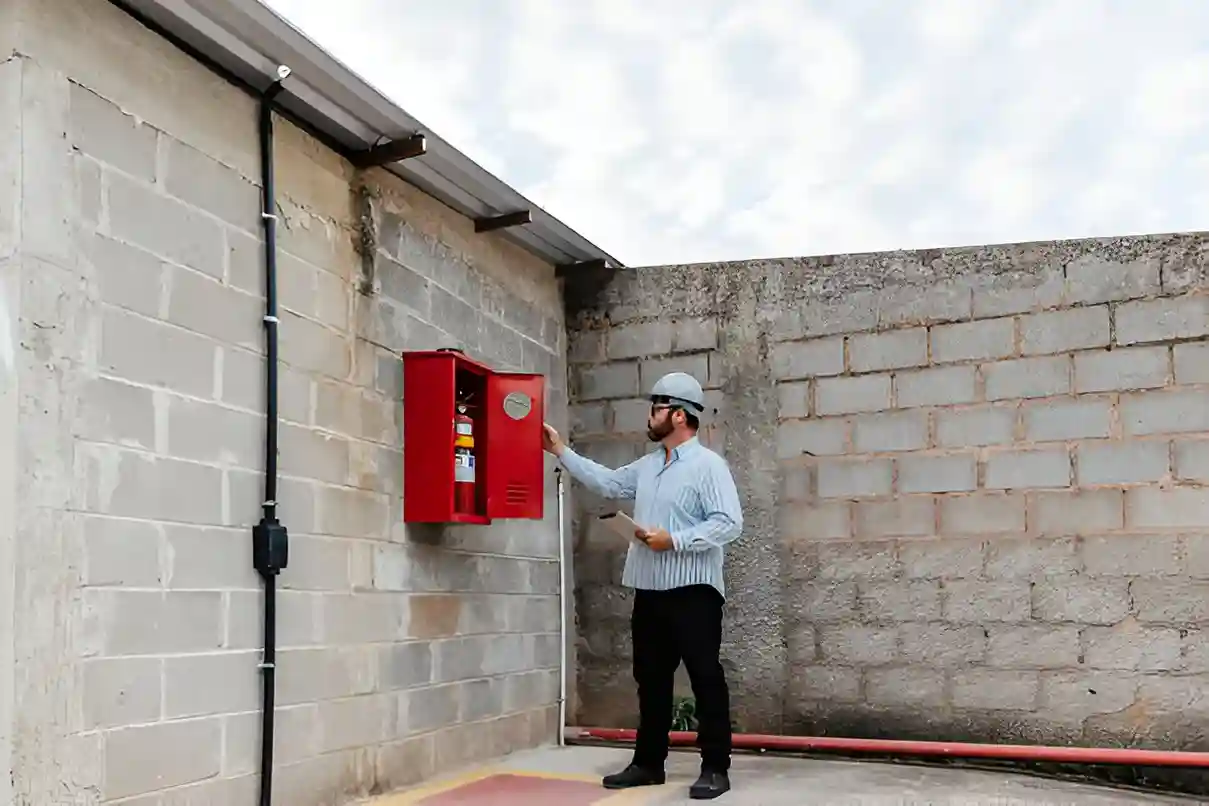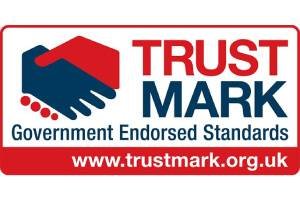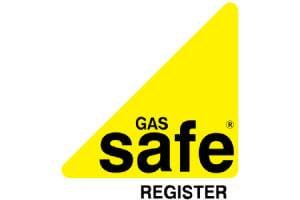
Carrying out a fire risk assessment isn’t just a safety measure; it’s a legal requirement under the Regulatory Reform (Fire Safety) Order 2005 and a key responsibility for UK businesses. These assessments are designed to uncover fire danger, evaluate current safety protocols, and ensure that effective preventative measures are in place. Ignoring these legal duties can result in serious consequences, including fines or prosecution. So, what exactly should a thorough fire risk assessment include, and who is ultimately accountable for meeting these legal standards?
Main Points
- The Regulatory Reform (Fire Safety) Order 2005 mandates that fire risk assessments must be conducted for all non-domestic premises in the UK.
- Employers must detect dangerous points and examine existing safety procedures to protect employees and visitors.
- Written records of assessments, emergency plans, and fire drills should be kept and regularly updated to ensure ongoing compliance.
- Failure to comply can lead to severe penalties, such as fines, imprisonment, and civil liability claims.
- Implementing continuous improvement strategies, like ongoing training sessions and updates on legislation, is essential for maintaining fire safety standards.
- Comprehending and following the legal requirements of fire risk assessment is essential for effective fire safety management and complying with the law.
Why Fire Risk Assessments Are a Legal Obligation
Fire risk assessments are an essential part of workplace safety. They are mandatory by law to protect employees and visitors. In the UK, the Regulatory Reform (Fire Safety) Order 2005 mandates that all businesses regularly carry out fire risk assessments to determine risks and implement preventative measures. This legal duty underscores the importance of protecting lives and property from fire risks.
Failure to comply can lead to serious consequences, including hefty fines and legal consequences. By conducting fire risk assessments, businesses show their dedication to health and safety standards, promoting safer working premises. Moreover, these assessments assist organisations in developing effective emergency plans, ensuring employees are prepared in a fire emergency.
Who Is Responsible for Fire Risk Assessments?
The responsibility for conducting fire risk assessments primarily falls on the employer or the person in control of the premises. This includes business owners, landlords, and managers who must ensure that their environments are safe from fire. The responsible person must assess risks, evaluate current fire safety rules, and take steps to improve them as needed.
In addition to employers, designated employees with adequate training may also help carry out these assessments. Their participation can improve the process, ensuring a comprehensive evaluation of fire safety protocols. Responsible parties must stay informed about the legal requirements of fire risk assessment and best practices, as these can change over time. Ultimately, those with decision-making authority bear responsibility, highlighting the importance of focused risk management in protecting lives and property.

Key Legislation Governing Fire Safety in the UK
In the UK, fire safety is mainly governed by several key pieces of regulation that set the framework for risk assessment and management. The primary order is the Regulatory Reform (Fire Safety) Order 2005, mandating that all non-domestic premises conduct fire risk assessments to expose liability risk and ensure suitable safety measures. Safety measures are in place.
The Health and Safety at Work Act 1974 emphasises employers’ obligation to safeguard employees from issues, including fire risks. The Management of Health and Safety at Work Regulations 1999 reinforce this responsibility by mandating proper safety procedures and training. Additionally, the Fire Safety Act 2021 clarifies responsibilities for fire safety in multi-occupancy residential buildings. Together, these laws underline the necessity of planned fire safety practices and outline the legal duties of businesses to prevent fires and protect lives and property.
What a Fire Risk Assessment Must Include by Law
Carrying out a fire risk assessment requires a detailed assessment of various factors to ensure compliance with the legal requirements of fire risk assessment. Legally, the appraisal is necessary to recognise unsafe conditions, such as sources of ignition, fuel, and other relevant factors, including oxygen. It should assess the risk to individuals, especially vulnerable groups, and estimate the likelihood of a fire occurring. Additionally, the assessment must record existing fire safety measures and their effectiveness, highlighting any areas that need improvement.
Moreover, it is essential to develop an emergency plan that clearly describes evacuation routes, assembly points, and responsibilities in the event of a fire. The assessment should also evaluate the effectiveness of fire detection and alarm systems, along with firefighting equipment. Lastly, businesses must keep a written record of the evaluation, including findings and actions taken, to promote transparency and accountability. Complying with the legal requirements of fire risk assessment helps protect lives and property and develops safety within the workplace.
How Often Should Fire Risk Assessments Be Reviewed?
Fire risk assessments are not a one-off task; they need regular reviews to ensure continuous compliance and safety. The frequency of these reviews depends on various factors, including changes to the building layout, occupancy, and any significant modifications to processes or equipment. Businesses should generally review their fire risk assessments at least annually.
Alongside the annual review, any significant incident, such as a fire or near-miss, should trigger an immediate reassessment. Changes in legislation or guidance related to fire safety may also require a review. Furthermore, you should verify that any new staff or changes in duties are considered, as these can impact existing fire safety measures. By adopting a strategic method for fire risk assessments, organisations can better protect their employees and assets while ensuring compliance with legal requirements.
Legal Consequences of Non-Compliance
Failure to comply with the legal requirements of fire risk assessment can result in serious legal consequences for organisations. The Regulatory Reform (Fire Safety) Order 2005 requires businesses to carry out thorough fire risk assessments, and failing to meet these legal obligations can result in substantial penalties. Organisations may face large fines or even imprisonment for responsible individuals, especially if negligence causes injury or loss of life.
Additionally, in the event of a fire, insufficient assessments can lead to civil liability claims from affected parties, further increasing legal risks. Insurance providers may also refuse to cover damages if proper fire safety measures are not implemented, causing financial difficulties. Furthermore, non-compliance can harm a business’s reputation, impacting customer trust and stakeholder relations. Organisations need to adhere to fire safety laws to prevent potentially serious legal repercussions.
Hiring a Competent Fire Risk Assessor: What the Law Says
How can you guarantee compliance with fire safety rules? Hiring a qualified fire risk assessor. The law mandates that businesses appoint individuals who possess adequate training and experience in fire safety. Competence guarantees that the assessment is thorough and identifies danger spots effectively.
| Criteria | Description | Importance |
|---|---|---|
| Qualifications | Relevant certifications and training in fire safety | Guarantees adherence to legal standards |
| Experience | Demonstrated history of conducting fire risk assessments | Reduces the risk of oversights |
| Knowledge of Regulations | Knowledge of current fire safety directives | Ensures adherence to legal requirements. |
Engaging a qualified assessor not only fulfils legal obligations but also improves workplace safety. You should prioritise this hiring process to effectively reduce risks related to fire.
Landlord safety certification offers dependable service at competitive prices with certified engineers.
Fire Safety Records and Documentation Requirements
The organisation must keep detailed fire safety records and documentation to prove compliance with legal standards. This documentation acts as proof of the actions taken to detect and control the fire Source at work. Key documents include fire risk assessment reports, fire safety training logs, and maintenance records for firefighting equipment such as extinguishers and alarms.
Furthermore, organisations should record any fire drills carried out and the attendance of employees during these drills. Records of incidents, near misses, and corrective actions taken should also be kept to ensure continuous improvement in fire safety practices.
These documents must be regularly reviewed and updated to reflect any changes in the workplace, such as alterations in layout or processes. Proper record-keeping not only meets legal requirements but also improves overall safety and preparedness in the event of a fire.

Benefits of recognising the legal obligations of fire risk assessment
Understanding the legal requirements of fire risk assessment is mandatory for creating a safe working environment, as it not only ensures compliance with regulations but also improves overall organisational resilience. By understanding these legal obligations, businesses can recognise fire threats, thereby lowering the risk of incidents that could endanger employee safety and property.
Furthermore, following fire safety laws, including the legal requirements of fire risk assessment, can save money by reducing the risk of expensive fines and insurance costs due to non-compliance. A solid understanding also encourages a safety-first culture within the organisation, boosting employee morale and trust.
Being knowledgeable about these legal regulations empowers management to develop effective training programmes, ensuring staff are adequately informed about fire safety protocols. Overall, understanding these legal essentials provides a strategic advantage for businesses seeking to safeguard their assets and maintain their reputation.
How to Stay Compliant with Current Fire Safety Laws
Compliance with current fire safety orders requires a preventative strategy to ensure that organisations not only meet legal obligations but also prioritise safety. Businesses ought to regularly perform fire risk assessments to expose risks and put necessary control measures in place. This process involves engaging qualified fire safety professionals who can offer expert guidance tailored to the specific needs of the organisation.
Regular training sessions for staff are essential to ensure everyone understands fire safety procedures and their roles during an emergency. Additionally, keeping accurate records of all safety measures, inspections, and training events is crucial for demonstrating compliance and supporting audits.
Organisations also need to stay updated on fire safety legislation updates and best practices, adjusting their policies as necessary. Furthermore, creating a clear communication plan for fire safety procedures can improve overall awareness and readiness. By implementing these measures, businesses can significantly minimise risks and promote a safety-conscious culture within the workplace.
Frequently asked questions.
Conclusion
In summary, an understanding of the legal requirements of fire risk assessments is essential for UK businesses. Compliance not only reduces the risk of legal penalties but also creates a secure environment for employees. By conducting thorough assessments, keeping detailed records, and involving qualified professionals, businesses can effectively follow fire safety regulations. Ultimately, prioritising fire safety improves overall operational integrity and shows a commitment to the well-being of everyone on the premises.







